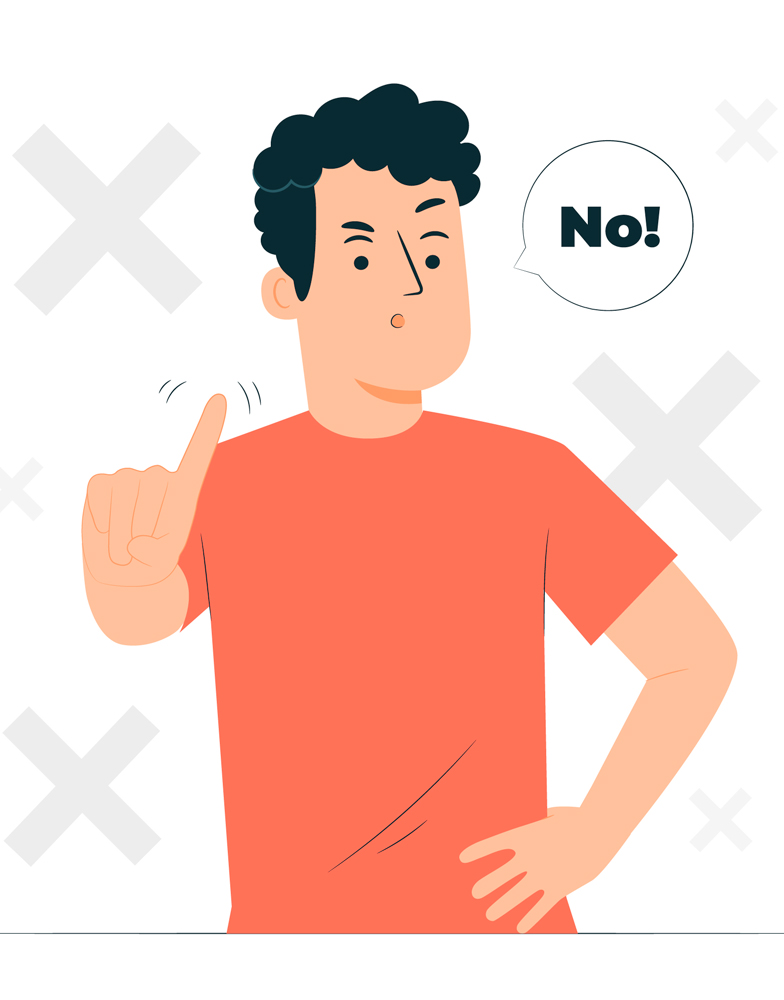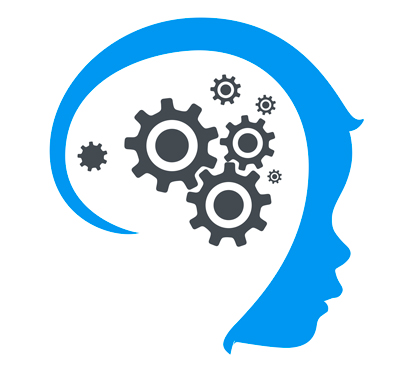Faced with danger or stress, our physiological functioning changes: the heart beats faster, breathing changes, body temperature increases, digestion stops then, when the danger is over, the body returns to its usual functioning. . Sometimes these changes take hold, persist, become chronic and invasive, creating a feeling of unease and insecurity. We then enter the vicious circle, the world of anxiety disorders.
 ANXIETY DISORDERS, WHAT IS IT?
ANXIETY DISORDERS, WHAT IS IT?
From neuroses to anxiety disorders: the diagnostic evolution
Anxiety disorders are defined by the presence of physical or psychological symptoms of anxiety, without any organic brain disease. At the end of the 19th century, the French psychiatrist Bénédict Morel was the first to identify these disorders. Then Freud worked on the origin of anxiety and proposed several models including his psychoanalytic model of neuroses, the reference in the field of psychopathology. From the second half of the 20th century, the diagnosis of anxiety disorders is identified under the name of neuroses. At the end of the 20th century, research, neuroscience, technology and pharmacology allowed the development of new psychological systems such as cognitivism, behaviorism, attachment theory, constructivism and the term "anxiety disorders". has become more relevant and better adapted.
Anxiety disorders at the genetic level
Genetically, although there are no “anxiety genes”, some are implicated in the risk of anxiety. This is the case of the 5-HT1A serotonin receptor gene. Currently anxiety disorders include several other disorders: generalized anxiety, panic disorder, specific phobias, agoraphobia, social anxiety disorder and separation anxiety disorder. Anxiety symptoms can be varied and affect different spheres of life.
NOSOGRAPHY OF ANXIETY DISORDERS
The World Health Organization (WHO) defines anxiety as the “feeling of indeterminate imminent danger accompanied by a state of uneasiness, agitation, helplessness or even annihilation”. Anxiety is not a pathology except in the nosographic sphere of anxiety disorders, when (unrelated to a dangerous situation) anxiety has disturbing consequences in the usual functioning. The “Diagnostic and Statistical Manual of Mental Disorders” (DSM 5) of 2013, differentiates anxiety disorders including panic disorder with or without agoraphobia, specific phobias, social anxiety disorder (social phobia) and generalized anxiety disorder, from the disorder obsessive-compulsive and post-traumatic stress disorder.

Book an in-office consultation in Paris Montorgueuil or remotely by videoconference
We receive our patients from Monday to Friday.
To make an appointment you can call us on +33 (0) 1 48 07 40 40
or +33 (0) 6 03 24 81 65 or even make it directly online
by clicking here:
PREVALENCE OF ANXIETY DISORDERS
According to figures from INSERM - The National Institute of Health and Medical Research, in an article entitled When anxiety becomes pathological published in 2021: "According to the High Authority for Health, "15% of adults aged 18 at age 65 have severe anxiety disorders in a given year, and 21% will have them during their lifetime”
Anxiety disorders twice as common in women
Women are almost twice as affected by these disorders as men.
Chronic disorders
Anxiety disorders are usually chronic, with a reduced quality of life. They continue to increase steadily and are marked by great distress. Its disorders may be aggravated by comorbidity with other disorders.
Anxiety disorders in young children
In young children, anxiety disorders are difficult to diagnose and can take years.

MONOPHOBIAS OR SPECIFIC PHOBIAS
In The Aeneid, Virgil pleads for courage: “Go, courage, noble child, this is how one rises to the stars” (Virgil, Canto IX, vers 641). Like Proteus, the Greek god endowed with the power to transform, take on all shapes and shapeshift endlessly, specific phobias can have countless facets and faces. The first systematic medical description dates from the 18th century. At the beginning of the 19th century, phobias were part of the monomanias. Informed readers of Nietzsche, the philosophers W. Benjamin and S. Kracauer analyze that our experiences of pathological fears are also our instruments of perception and our resources for perfecting the gaze and envisaging critical reversals (Breton, Maestragg, 2016).
When do you become phobic?
"The line of demarcation is clear, we become phobic from the moment we are afraid of being afraid" (Perrot, 2021, p.211). Often the phobia starts with a panic attack which is impressive and often traumatic. It leaves traces, the anguish arrives at the idea of reliving it. Panic panics and the phobia begins.
The DSM 5- the fifth edition of the Diagnostic and Statistical Manual of Mental Disorders published by the American Psychiatric Association in 2013 determines the criteria for a specific phobia.
Phobia is an intensive and unreasonable fear, in the face of a feared object or situation or just in the face of the same imagined, anticipated situations. The object or the situation is well determined and the anxiety is present as long as the exposure lasts and panic attacks can occur. This creates a source of insecurity. The person begins to run away from feared situations, isolates himself, his life changes, ties with others begin to break...
Clinically, three phobic syndromes are defined:
- Specific phobias
- Social phobias
- Agoraphobia
We can note comorbid links between anxiety and depression and anxiety and addictions. The list of stimuli causing specific phobias is not exhaustive: fear of animals (snakes, dogs, pigeons), fear of natural elements (water, storms, fear of heights, etc.) , fear of flying, of the sight of blood, of darkness, of closed spaces, fear of speaking in public...
Treatment of anxiety disorders
The systemic and strategic approach and hypnosis are effective approaches for the resolution of anxiety disorders and make it possible to install solid and lasting changes.
Read also:
Treatment of anxiety disorders with the systemic and strategic approach
OCD and Anxiety Disorders Clinic
The OCD and Anxiety Disorders Clinic specializes in the treatment of anxiety disorders and offers Strategic Brief Therapy® consultations. Using over 25 years of clinical research and with thousands of patients successfully treated using the intervention model known as Brief Strategic Therapy®, OCD Clinic specialists have proven (Gibson 2014, 2016, 2019a, 2019b, 2019c, Nardone 2013, Portelli, 2007) that although human problems can be persistent, complicated and painful, we do not always need some form of long and prolonged intervention to solve the problem and relieve suffering. This model has proven to be the most effective and efficient form of treatment for obsessive compulsive disorder currently available anywhere (Ray & Nardone 2007).
AMAXOPHOBIA, THE FEAR OF DRIVING
 Etymologically, amaxophobia comes from the ancient Greek, "amaxo" designating chariot, vehicle and "phobia", dread, the disabling fear of driving. It is an unreasonable dread occasioned by ordinary driving circumstances that turns into a stressful activity. Some people stop driving altogether.
Etymologically, amaxophobia comes from the ancient Greek, "amaxo" designating chariot, vehicle and "phobia", dread, the disabling fear of driving. It is an unreasonable dread occasioned by ordinary driving circumstances that turns into a stressful activity. Some people stop driving altogether.
Symptoms of amaxophobia
Symptoms of amaxophobia are anxiety, sweating, chills, and panic attack. Clinically, amaxophobia is classified in the DSM-5 (American Psychiatric Association, 2015) and in the ICD-10 (World Health Organization, 2011), as a specific phobia of the situational subtype.
How do you become amaxophobic?
The origin of amaxophobia is multifactorial: genetic, psychological and developmental. The fear of driving can appear following a traumatic event, such as after being the victim of an accident or after losing a loved one in these circumstances. Very often a lack of confidence, an under-esteem of oneself present additional factors which favor vulnerability.
Hypnosis and amaxophobia
A presupposition of hypnosis is that when living relationships are dysfunctional, when bonds are insecure, autonomy is not in place and favors the installation of symptoms. According to a study offered by the “Centro Studi e Documentazione Direct Line”, an internet car insurance company, 68% of Italian drivers admitted to being afraid of driving in particular situations. The factors that aggravate amaxophobia are situations where control over events and environments is lacking (bad weather, rain, snow), highways, bridges, tunnels, rapid descents and also loneliness at the wheel.
Symptoms of amaxophobia
This exaggerated fear can manifest itself:
- Physiologically (malaise, confusion, tension, tachycardia, panic attack, fear of dying or losing control of one's body)
- Emotionally (fear of anticipation)
- Behavioral (avoidance)
- At the cognitive level (catastrophic scenarios)
The idea that danger is everywhere gradually sets in and grows, eg other drivers are dangerous, they lack skills, they don't pay attention. Car outings are then risky, the avoidance solution is amplified and amaxophobia can thus evolve into agoraphobia.
THE GIORGIO NARDONE MODEL

In his books, his courses and his conferences, G. Nardone and his team generously share the support protocols they have developed and tested, with the theoretical support, the clinical examples, the transcriptions of the detailed interviews and we were able to take advantage of this chance to learn and work thanks to his recorded sessions.
G. Nardone's intervention model
G. Nardone's intervention model is centered on stopping attempts at a solution. The symptom is the result of attempts to find a solution to a difficulty. In anxiety disorders, fear is the basic sensation and it is precisely by wanting to avoid fear that the person enters the net of the phobia. She begins to feel helpless and begins to avoid what she fears, or asks for help. His attempts at solutions bring immediate relief, but increase fear. The person becomes truly incapable and dependent.
Anxiety disorders, a disorder that invades existence
According to G Nardone the natural reaction is to avoid the situation and the object of fear. The more there is avoidance, the more the feeling of fear grows. Over time and repetition, this becomes an ineffective and counterproductive solution. Another typical and ineffective solution is "ask for help" because it seems logical but in the long run it makes the problem worse. The attempted solution that doesn't work either is "the socialization of the problem." The disorder invades existence and becomes the favorite subject with the entourage, family, friends, spouse... As if the entourage endorsed to increase the disorder.
How to get out of ineffective strategies that make the situation worse?
The proliferation of these ineffective strategies makes the situation worse. It is observed that the possibility of falling into a trap depends mainly on the attitude one adopts towards an idea - that of abandoning one's beliefs and habitual thoughts (Watzlawick, 1988).
Intervention logic
The intervention logic is centered on stopping the most frequent solution attempts (avoidance and asking for help) to deconstruct the trap of the phobia. The therapist sets up therapeutic maneuvers, with the prescriptions of the tasks, to break the dysfunctional attempts at solution, to expand and experiment with new functional strategies and to face the fears.
Anxiety disorders are not a disease
In this approach, anxiety disorders are not a disease. They are the consequence of attempts at dysfunctional and redundant solutions in a circular interaction. Anxiety disorders, according to systemic therapy, are the result of a vicious cycle of avoiding fear and seeking help. A quote attributed to Einstein postulates that ignorance is doing the same thing over and over and expecting a different result.
The invention of loneliness. Giorgio Nardone , Revue Hypnose et Thérapies Brèves
Clinical Masters with specialization in psychopathology with Pr Nardone's CTS
NEUROBIOLOGY OF ANXIETY DISORDERS

We can present anxiety as a progressive phenomenon of which we can only consider a part by abstraction. On the one hand, moderate anxiety can be helpful and motivating, and on the other, intense anxiety with “fight or flight” responses enables survival in the face of danger. Paradoxically, it becomes dangerous when it exceeds a threshold of what is appropriate or when it rises to an excessive degree.
Anxiety disorders explained at the neurobiological level
Advances in neuroscience explain the neuroanatomical circuits involved in fear and anxiety in humans (the conditioning, acquisition, consolidation, reconsolidation and extinction of fear). The response to danger passes through the limbic system, with the amygdala being essential in emotional processing and connected to a sophisticated system with the hippocampus, cortical areas, prefrontal cortex, thalamus and hypothalamus.
Possible treatments for anxiety disorders at the neurological level
Danger stimuli affect the thalamus and can then be treated:
1) Either by the short route (thalamus-amygdala activating immediate responses with the aim of preparing for survival behavior "(secretion of stress hormones, adrenaline, acceleration of the heart rate raising blood pressure, endocrine responses (cortisol), behavioral responses (avoidance, amazement) and motivational responses (dopamine and pleasant feelings).During a traumatic experience, the amygdala can disconnect from the hippocampus (the peritraumatic dissociative state” ).
2) Either through the long pathway (thalamus - the cortical system - amygdala) with analytical and decision-making processing, (Salmona, 2020)
The short pathway responses (neuro-anatomical, behavioral and neuro-endocrine) during the manifestations of the disorders anxiety in panic disorder, specific and social phobias, post-traumatic stress disorder and generalized anxiety disorder resemble the manifestations in animals exposed to fear. Specific phobias could be explained by a dysfunction of the (conditioned) fear circuits.
SYSTEMIC AND STRATEGIC APPROACH TRAINING & HYPNOSIS TRAINING
General systemic training
DU in Relationship Clinic with the University of Paris 8
Clinical Master's degree with specialization in psychopathology with the CTS of Professor Nardone
Systemic Coach Training
Systemic training in relationship management with the University of Grenoble
Online Ericksonian Hypnosis Training





